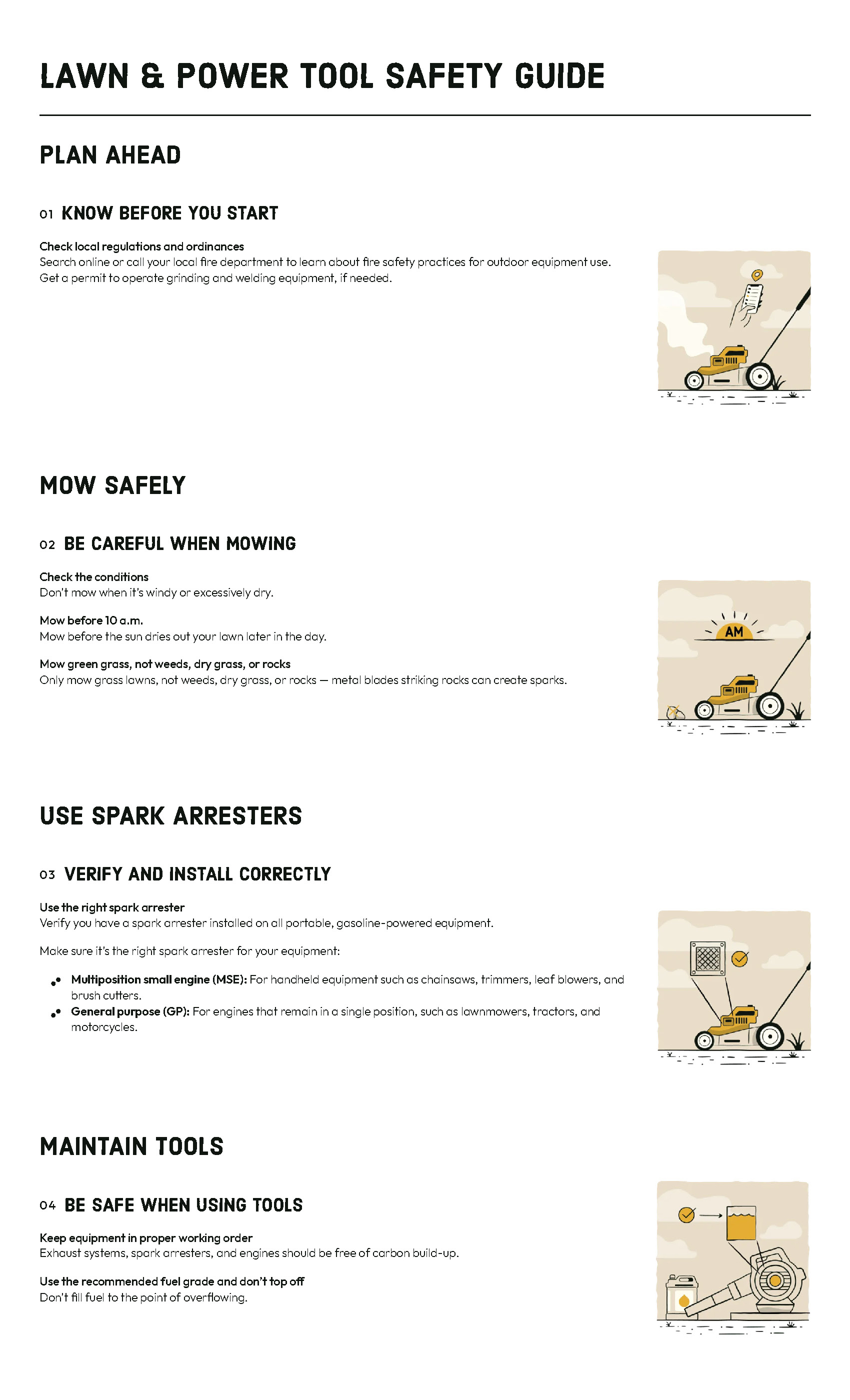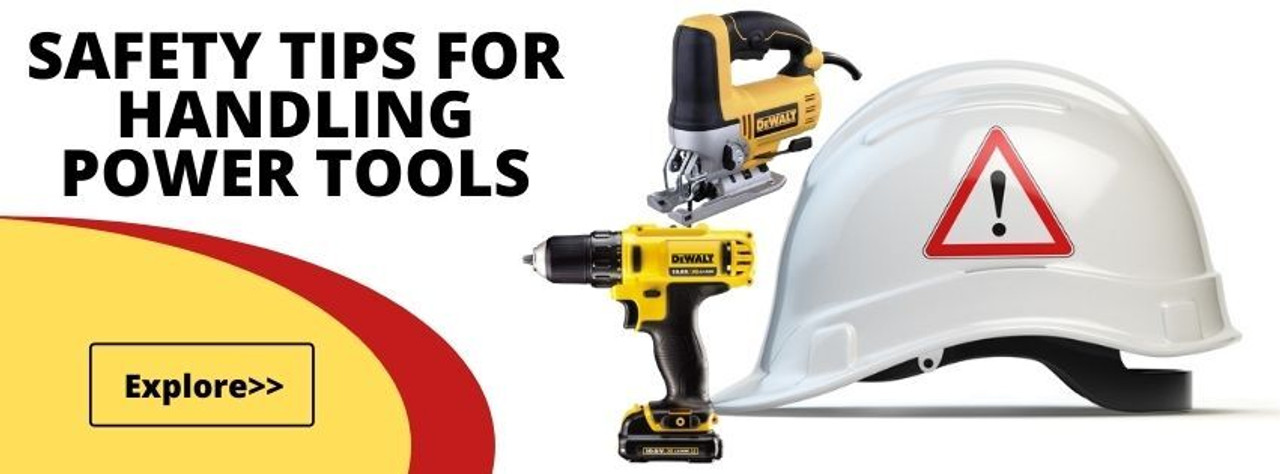Using power tools can make your projects faster and easier. But if you’re not careful, they can also be dangerous.
Imagine how it would feel to avoid accidents and finish your work safely every time. That’s exactly what this article will help you do. Keep reading to discover simple, practical safety tips that protect you and your loved ones while using power tools.
Your safety is in your hands—let’s make sure you get it right.

Credit: www.youtube.com
Choosing The Right Power Tool
Using the right power tool makes your work easier and safer. Picking the right tool helps you finish tasks faster.
It is important to know which tool fits your job. This guide will help you choose safely and wisely.
Match Tool To Task
Choose a power tool that fits the job you want to do. Using the wrong tool can cause damage or injury.
Each tool is designed for certain materials and tasks. Find one that matches your project’s needs.
- Use a drill for making holes in wood or metal
- Use a saw to cut wood or plastic
- Use a sander for smooth finishing surfaces
- Use a grinder to shape or polish metal
Check Tool Condition
Inspect your power tool before each use. A damaged tool can be dangerous and may not work properly.
Look for cracks, frayed cords, or loose parts. Fix or replace tools that are not in good shape.
- Check power cords for cuts or exposed wires
- Make sure all switches and buttons work well
- Look for cracks in the tool’s body or handles
- Ensure blades or bits are sharp and secure
- Clean dust and debris from vents and moving parts
Preparing Your Workspace
Before using power tools, get your workspace ready. A clean and safe area helps prevent accidents.
Organizing your space makes your work easier and faster. Safety starts with preparation.
Clear And Organize Area
Remove clutter and unnecessary items from your workspace. Keep only what you need close by.
Organize tools and materials to avoid tripping or knocking things over. A tidy area lowers the risk of injury.
- Clear floors of debris and cords
- Store tools safely when not in use
- Keep work surfaces clean and flat
Ensure Proper Lighting
Good lighting helps you see your work clearly. It reduces mistakes and accidents.
Use bright lights that cover the entire workspace. Avoid shadows that hide hazards.
- Use overhead lights for general brightness
- Add task lights for detailed work
- Check bulbs regularly and replace if dim
Secure Workpieces
Hold your workpieces firmly to prevent slipping. Use clamps or vices to keep items stable.
Secure pieces reduce the chance of injury and improve cutting or drilling accuracy.
- Use clamps for small or loose parts
- Make sure the workpiece does not move
- Check stability before turning on tools
Personal Protective Equipment
Using power tools can be dangerous without proper safety gear. Personal protective equipment helps protect your body from injuries.
Always wear the right equipment to stay safe and reduce the risk of accidents.
Eye Protection
Power tools can send small pieces of debris flying into your eyes. Eye protection keeps your eyes safe from dust, sparks, and sharp objects.
Wear safety goggles or glasses made for power tool use. Make sure they fit well and do not fog up.
Hearing Protection
Many power tools make loud noises that can harm your hearing. Hearing protection lowers the risk of hearing loss.
Use earplugs or earmuffs to protect your ears. Choose the type that is most comfortable for long use.
Gloves And Clothing
Gloves protect your hands from cuts, burns, and vibration. Wear gloves that fit well and allow you to handle tools safely.
Wear close-fitting clothes to avoid getting caught in moving parts. Avoid loose sleeves, jewelry, and ties.
- Use gloves made for power tool work
- Wear long sleeves that fit tightly
- Remove jewelry before starting work
- Choose sturdy shoes for foot protection
Safe Handling Techniques
Using power tools safely helps prevent accidents and injuries. It is important to handle them with care and focus.
Good habits keep you in control and reduce the risk of harm while working with power tools.
Proper Grip And Posture
Hold power tools firmly to keep control. Use a steady grip that feels comfortable and secure.
Stand with your feet shoulder-width apart. Keep your body balanced to avoid slips or falls.
- Hold the tool close to your body
- Keep your back straight
- Bend your knees slightly for stability
Avoid Distractions
Focus fully on the task when using power tools. Distractions can cause mistakes and accidents.
Turn off phones and avoid talking while working. Stay alert to your surroundings at all times.
- Work in a quiet area
- Keep others away from your workspace
- Do not rush or multitask
Use Both Hands
Using both hands gives you better control of the power tool. It also helps balance the tool’s weight.
Keep your hands dry and free from oil or grease to avoid slipping. Always follow the tool’s instructions for hand placement.
- Grip the tool handles firmly with both hands
- Use auxiliary handles if available
- Keep fingers away from moving parts
Operating Power Tools Safely
Power tools help us finish tasks faster. Using them safely prevents accidents and injuries.
Follow safety tips to protect yourself and others around you when working with power tools.
Follow Manufacturer Instructions
Read the manual before using any power tool. It has important safety information.
Use the tool only as the manufacturer says. Do not change or remove safety parts.
- Know how to start and stop the tool correctly
- Understand all controls and features
- Wear recommended safety gear listed in the manual
Check For Damage Before Use
Inspect tools before each use to find cracks, frayed cords, or loose parts. Damaged tools can cause injury.
Do not use tools that look broken or unsafe. Report or fix any problems before starting work.
- Look for cracks in handles or housings
- Check power cords for cuts or wear
- Make sure moving parts work smoothly
- Test safety switches and guards
Avoid Overreach
Keep your balance and footing when using power tools. Do not reach too far or work from unstable places.
Move closer to your work instead of stretching. Use a stable ladder or platform if you need height.
- Stand with feet flat and balanced
- Keep the tool close to your body
- Use tools with long handles if needed
- Do not lean or stretch beyond comfort

Credit: smokeybear.com
Maintenance And Storage
Power tools need care to work well and last long. Proper maintenance and storage keep tools safe to use.
Cleaning, checking, and storing tools right help prevent accidents and damage.
Regular Cleaning And Inspection
Clean power tools after each use. Dirt and dust can cause problems inside the tool.
Check tools for cracks, loose parts, or damage before every use. Fix problems quickly to avoid injury.
- Remove dust with a dry cloth or brush
- Use compressed air for hard-to-reach areas
- Look for frayed cords or broken switches
- Test the tool to ensure it works properly
Store Tools Properly
Keep power tools in a dry, cool place to stop rust and damage. Avoid damp or hot areas.
Use cases, shelves, or toolboxes to organize and protect your tools. This helps you find them easily.
- Store tools off the ground to prevent moisture damage
- Keep cords coiled and untangled
- Lock sharp blades and bits away safely
- Label storage spaces to keep tools organized
Replace Worn Parts
Worn parts reduce tool safety and performance. Replace blades, bits, and cords if they look old or broken.
Use the correct parts made for your tool. Wrong parts can cause accidents or damage the tool.
- Check blades for dullness or chips
- Inspect cords for cuts or frays
- Replace damaged safety guards immediately
- Follow the tool manual for part numbers
Emergency Preparedness
Using power tools can be risky without proper safety plans. Being ready for emergencies helps prevent serious injuries.
Knowing what to do in an accident or fire saves time and lives. Always prepare before starting work with power tools.
First Aid Basics
Learn simple first aid steps to treat cuts, burns, or shocks. Keep a well-stocked first aid kit nearby at all times.
Clean wounds quickly and stop bleeding by applying pressure. Call for help if injuries are serious or if you feel unsure.
Know Emergency Contacts
Keep a list of emergency phone numbers near your work area. Include local emergency services and a trusted contact person.
Make sure everyone knows how to call for help fast. Save numbers in your phone and post them where they are easy to see.
Keep Fire Extinguisher Handy
A fire extinguisher should be close to your power tool workspace. It helps control small fires before they spread.
Check the extinguisher regularly to ensure it works. Learn how to use it properly to act quickly during emergencies.

Credit: www.youtube.com
Frequently Asked Questions
What Are Essential Safety Tips For Using Power Tools?
Always wear protective gear like gloves and goggles. Check tools before use. Keep your workspace clean and well-lit. Follow the manufacturer’s instructions carefully. Never bypass safety features or use damaged tools.
How Can I Prevent Accidents With Power Tools?
Stay focused and avoid distractions while operating tools. Use clamps to secure materials. Keep hands clear of moving parts. Disconnect power before changing accessories. Store tools safely after use to prevent hazards.
What Personal Protective Equipment Is Necessary For Power Tools?
Wear safety goggles to protect eyes from debris. Use hearing protection to prevent noise damage. Gloves protect hands but avoid loose ones near rotating parts. Wear dust masks when cutting or sanding to avoid inhaling particles.
How Do I Maintain Power Tool Safety Regularly?
Clean tools after every use to remove dust and debris. Inspect cords for damage and replace if frayed. Lubricate moving parts as recommended. Store tools in a dry, secure place. Regular maintenance ensures safe and efficient operation.
Conclusion
Safety with power tools requires care and attention. Always wear protective gear. Check your tools before use. Clear your workspace of clutter. Follow instructions for each tool. Keep your focus sharp and avoid distractions. Unplug tools when not in use.
Store them safely after work. Remember, safety first ensures your project success. By using these tips, you reduce risks and prevent accidents. Stay informed and cautious. Your safety is in your hands. Happy and safe tool handling!
9 min read

